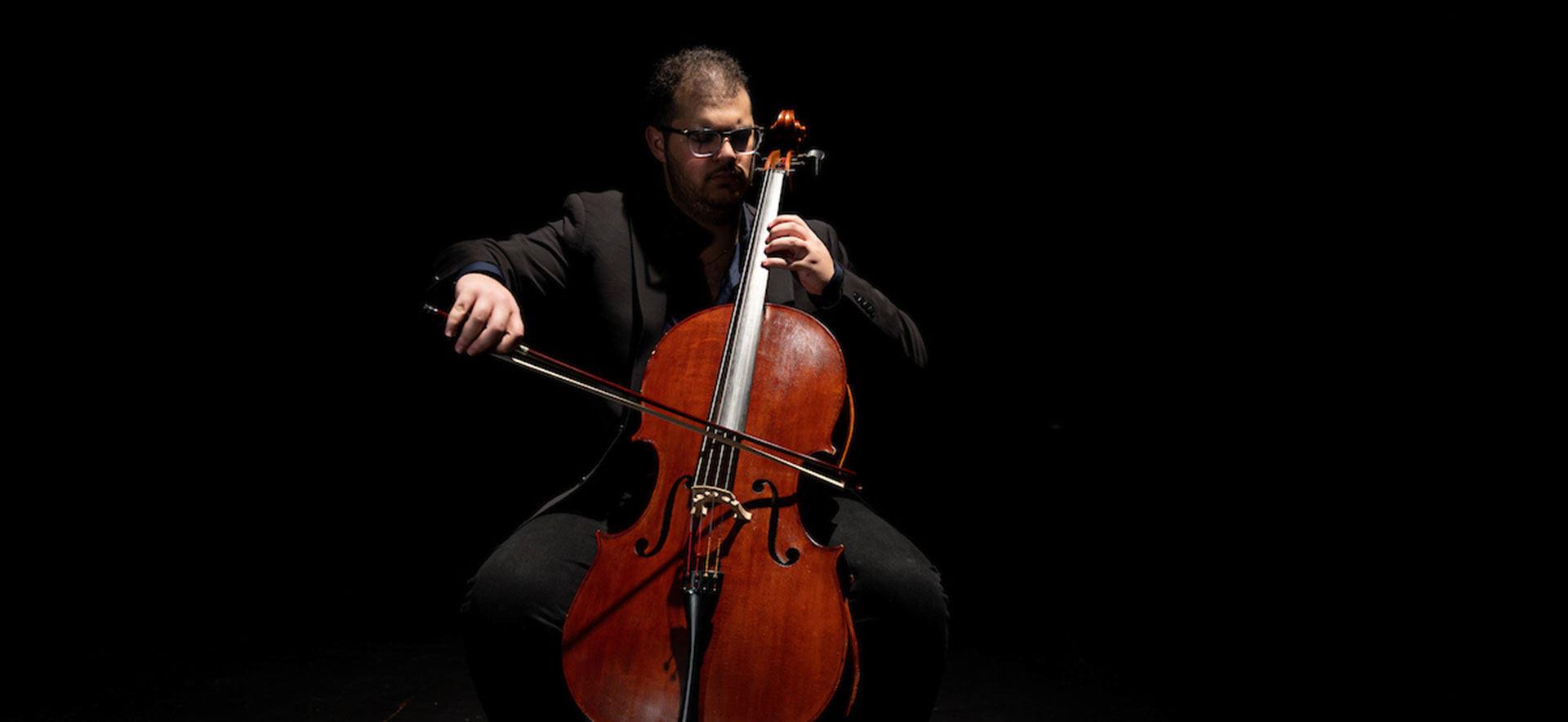A Digital Renaissance
Using software that can re-create old-world artisanship, computer science professor Harry Mairson builds violins and cellos that resound with musical life.
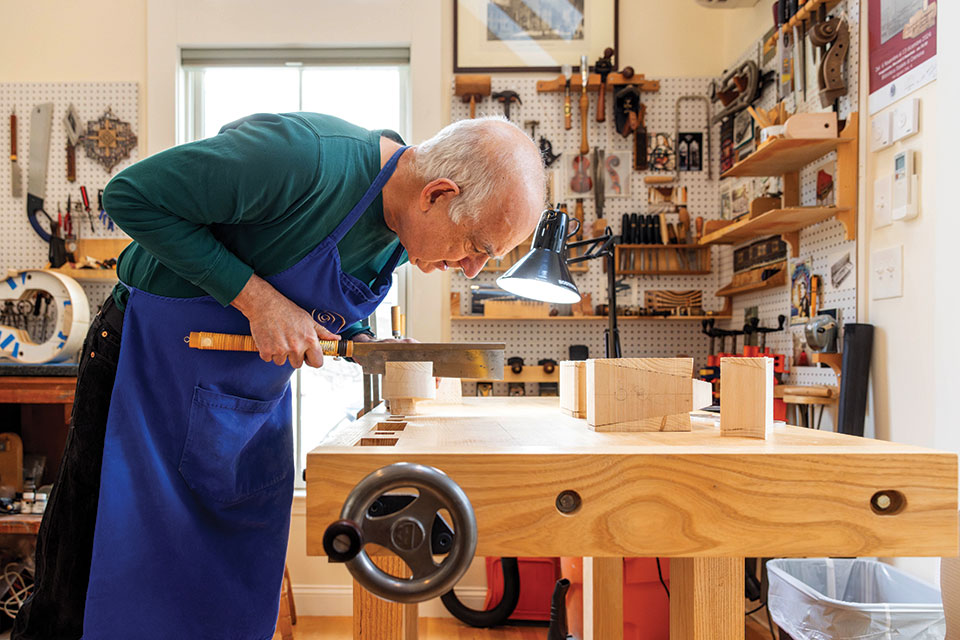
By David Levin
Photography by Gaelen Morse
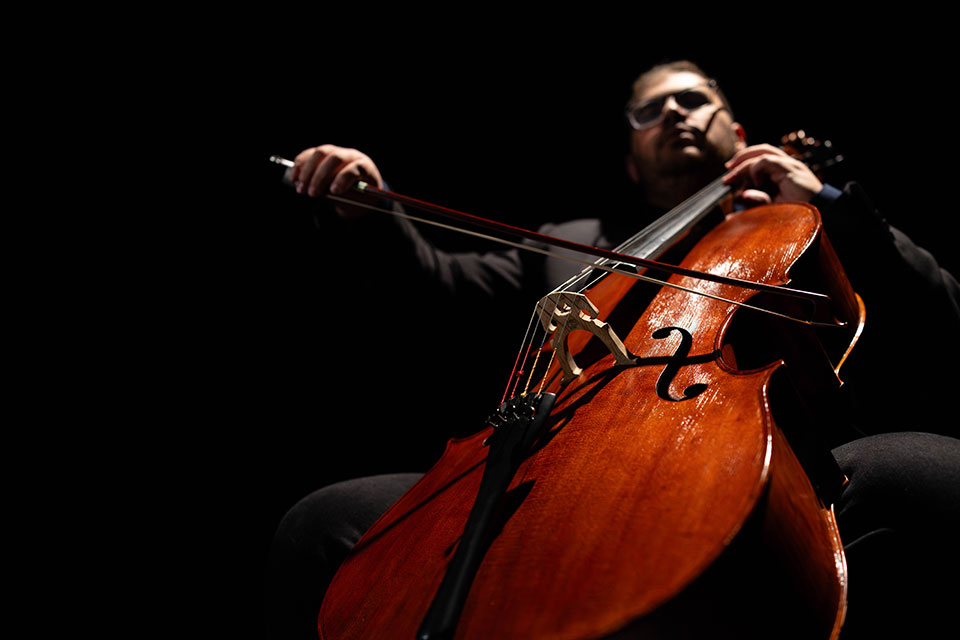
WATCH: In this short film, Harry Mairson explains why he’s so passionate about building stringed instruments — and how he applies digital tools to a decidedly analog craft.
Inside a cramped workshop in Cremona, Italy, the scent of shavings from spruce and exotic woods drifts through the air. Dust motes catch the early-evening light streaming in through half-shuttered windows. On a small terra-cotta stove, a pot of animal-hide glue gently bubbles. A jar of colored varnish, its recipe a closely guarded secret, sits nearby.
It was here, in the 16th century, that the violin as we know it was born, carved into existence by the hands of master craftsman Andrea Amati.
The description of Amati’s shop is purely imagined. The details of its layout and even where it stood have been lost to time, but what happened within its walls irreversibly changed the course of Western music. Today, the violins of Amati and the Cremonese craftsmen he influenced — including Antonio Stradivari — fetch tens of millions of dollars.
“Amati set the gold standard for the instrument,” says Harry Mairson, professor of computer science. “He had an aesthetic idea.”
For generations, builders of stringed musical instruments — known as luthiers — have stayed close to Amati’s original designs for violins, violas, cellos and basses. Modern luthiers still strive to replicate those early models’ sound, shape and feel.
Mairson, an avid amateur luthier, is no exception. Since 2009, he’s been trying to perfect his craft to achieve this goal. And he’s not just using his hands: Mairson has also written custom software that can apply the drafting techniques early craftsmen like Amati used to create their violins.
It’s changing the way some world-class luthiers approach their work.
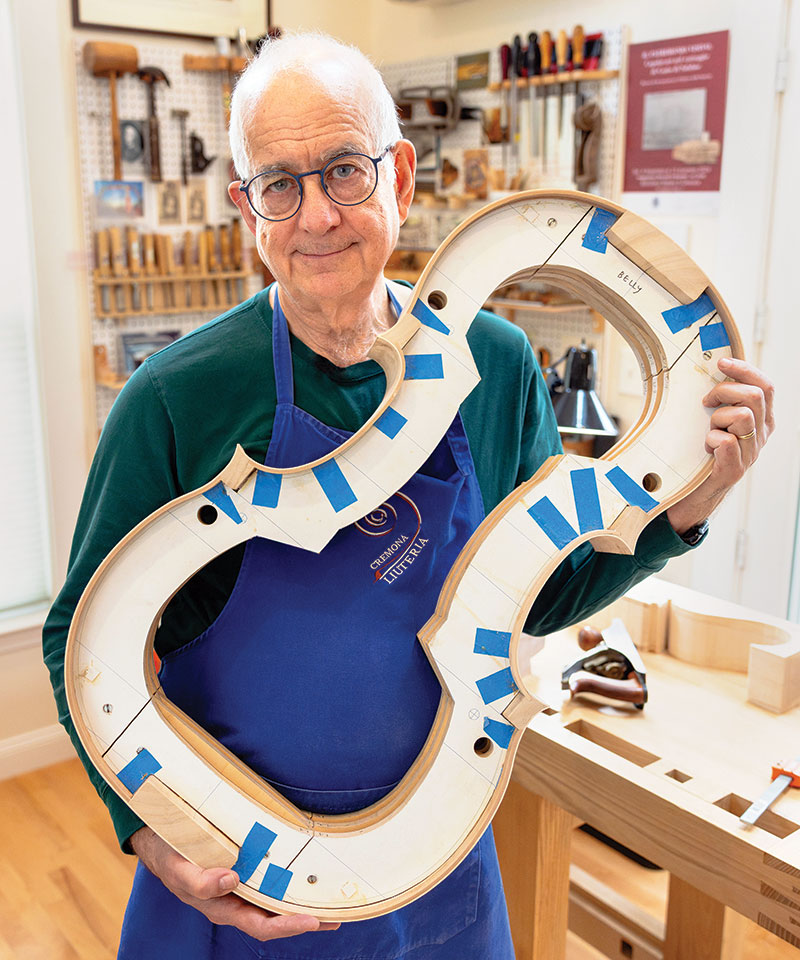 ARTFUL LINES: Mairson builds the body of a cello around a white internal mold, which will be removed before the instrument’s top, bottom and neck are attached.
ARTFUL LINES: Mairson builds the body of a cello around a white internal mold, which will be removed before the instrument’s top, bottom and neck are attached.
Fiddling with geometry
Mairson says early luthiers’ methods are well suited for replication by digital tools. Amati and his contemporaries likely sketched out an instrument’s design on the basis of simple geometric proportions, instead of using individual units of measurement, which, at the time, varied widely from town to town.
“You don’t have to have a great knowledge of math or design skills to utilize a proportion-based system,” says Chris Germain, a Philadelphia-based luthier and former president of the Violin Society of America. “All you really need is something to draw a straight line and a way of dividing up segments so you can design something based upon a ratio.”
With nothing more than a straightedge and a compass, early luthiers could determine every aspect of their violins’ subtle curves. No need to convert units like a Venetian punto into a Roman oncia; half a line will always be a half, a third always a third.
Mairson is quick to note he didn’t personally discover how this method may have worked in Amati’s time. That idea was first popularized by a modern French luthier, François Denis, who reconstructed the technique after analyzing historical instruments from the period.
When he tried using Denis’ methodology, however, Mairson quickly realized its limitations. Drawing those circles, lines and arcs on paper could take hours, the system would be prone to human error, and all that effort would produce only one copy.
Still, something about the process seemed oddly familiar. “While I was sketching it all out, I noticed Denis’ directions of what to do with the straightedge and compass looked a lot like what software engineers call ‘pseudocode,’” Mairson explains. “They described a rough set of step-by-step instructions in plain sentences. I realized I could translate them, almost word for word, into a geometric programming language.”
Within a few weeks, Mairson had done just that, creating software he named Digital Amati. It carries out Denis’ instructions perfectly. Simply enter an initial length for an instrument, and it instantly goes through the calculations needed to plot each circle, line and intersection, generating printable life-size plans in seconds.
Mairson has since made the software available for free online, giving luthiers everywhere a tool to quickly sketch out new ideas, proportions and designs.
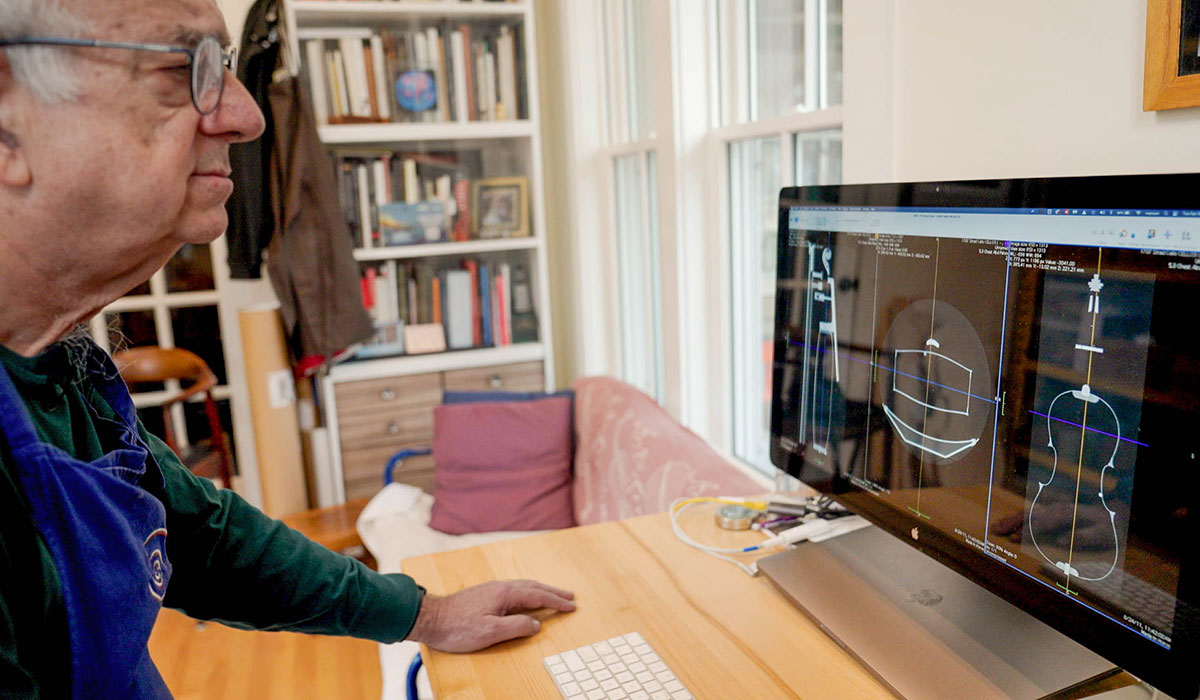
The sound of music
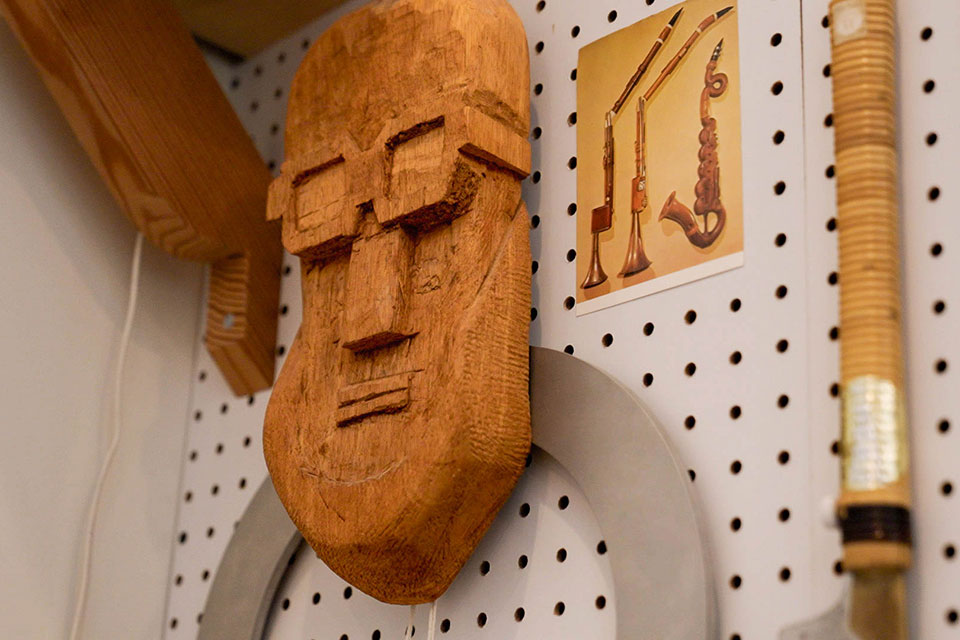 A wooden self-portrait carved by Mairson’s father keeps watch over the workshop. Mairson still uses many of his dad’s tools.
A wooden self-portrait carved by Mairson’s father keeps watch over the workshop. Mairson still uses many of his dad’s tools.
Mairson embraces this sort of hands-on experimentation. Walk into his office at Brandeis, and it becomes clear he’s a consummate tinkerer, with a penchant for complex projects.
Elaborate Halloween costumes he made for his kids — a wearable scale model of Fenway Park, a 3-foot-wide version of Boston’s Zakim Bridge, a diminutive Volkswagen Beetle and a life-size cardboard toilet — hang from the ceiling. There’s a bar cabinet handmade by his father; the cross section of a wooden boat; and a half-finished, elaborately carved lute.
Although he doesn’t play any instruments, Mairson developed an interest in building them as a teenager. During his college years, he traveled to England to work for a harpsichord maker in Cambridge, then later built a clavichord — another early keyboard instrument — while earning his PhD. It wasn’t until 2009 that he dove headfirst into the world of violins. The learning curve was steep, he says, but the end result, while imperfect, seemed magical.
“My first cello was a tank,” he says. “I was happy just to get through the process. But when all the pieces were together, the strings were on, and it made a sound for the first time, it was like I had created life. Wood and wire had become a living thing. It was like a secular transubstantiation — just magnificent.”
“My first cello was a tank,” Mairson says. “But when it made a sound for the first time, it was like a secular transubstantiation — just magnificent.”
In a dedicated workshop he added onto the side of his house, he began to hone his skills, working with some of the finest violin makers. His latest instruments have gotten positive reviews from fellow luthiers and top-tier musicians. (Simone Gramaglia, who plays a Mairson-made viola, and has performed at Carnegie Hall and Lincoln Center, calls Mairson a “natural talent.”)
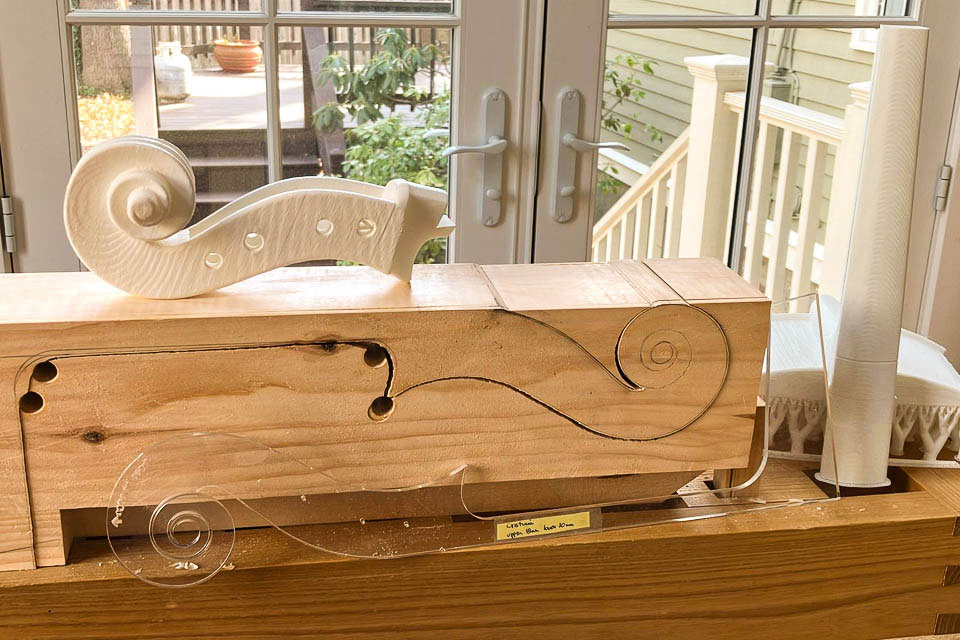
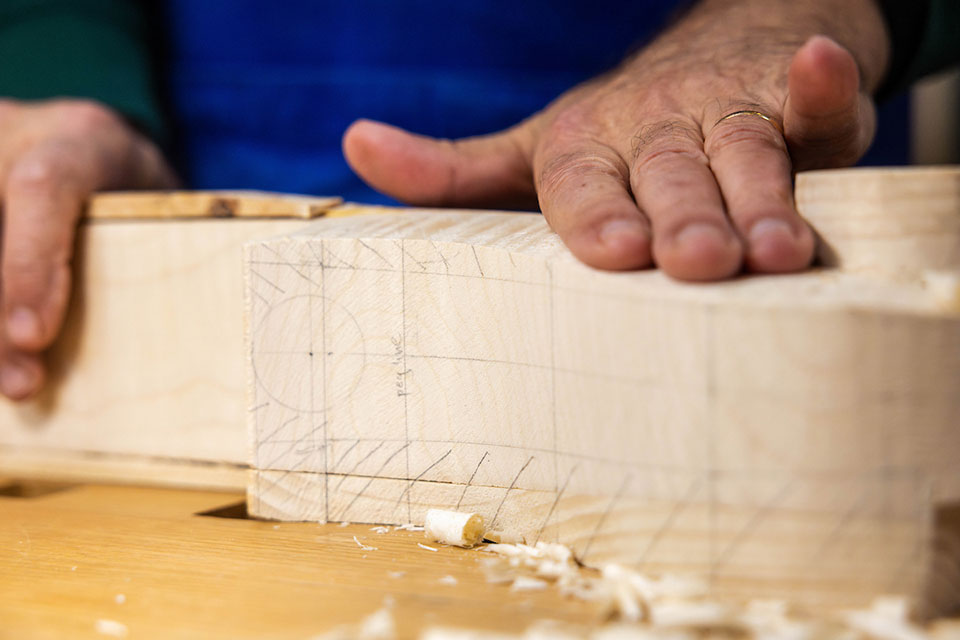
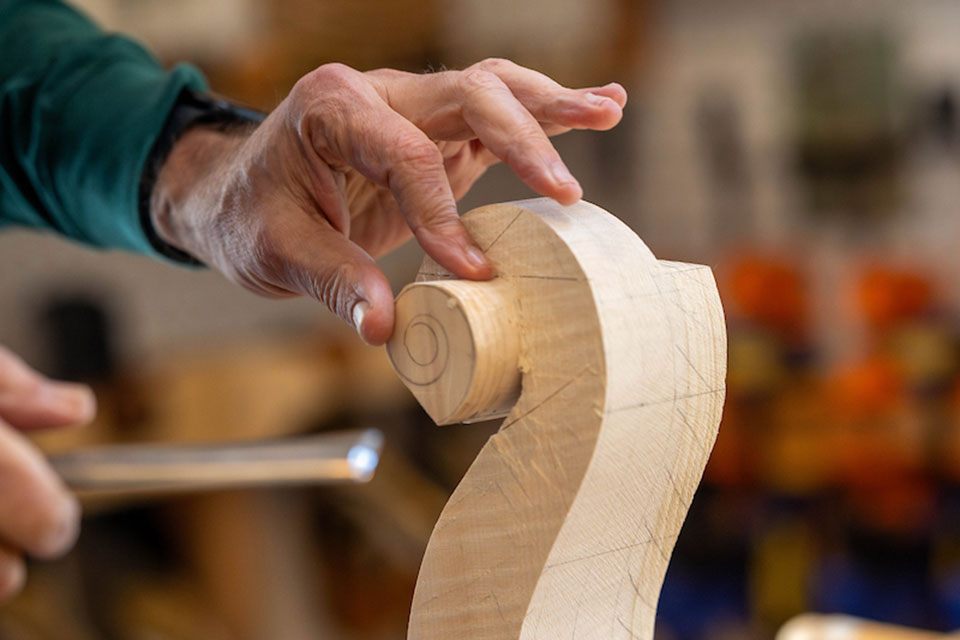
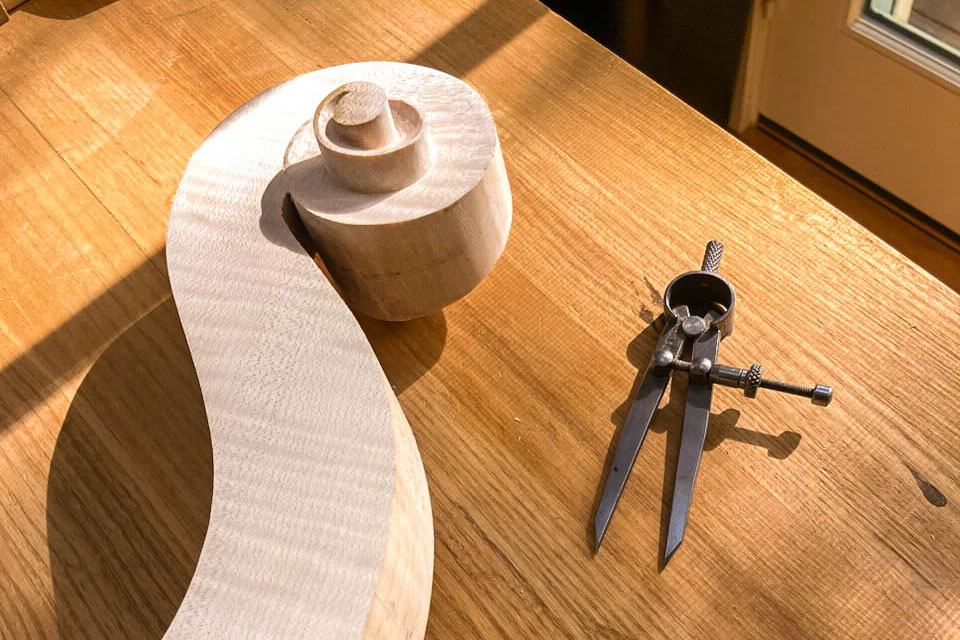
Yet his biggest impact might just be the software he’s developed.
“Before Harry shared his program with me, I was trying to re-create Amati-style instruments by comparing photographs with a pencil and tracing paper,” says Kevin Kelly, a violin maker based in Boston. “His software accelerated my work exponentially, because I was able to make so many iterations and comparisons.”
Kelly has since written his own code based on Mairson’s system, which he uses extensively, and says a growing number of other luthiers are following suit.
There’s still room for artistry, however. Mairson’s software can easily reproduce the prized look of historical instruments, but it can’t guarantee the new instrument will have the same sound as its older counterpart. To re-create that, builders have to consider the subtle contours, thickness and joinery of each individual wooden part.
“That requires a lot of judgment on the part of a luthier,” Germain says. “You have to understand the particular piece of wood you’re working with — how dense it is, how stiff it is, how flexible. Should you make it a little bit thinner here or leave it a little heavier there? What would be the acoustic effect of a slightly higher arching? None of that is in the design.”
To faithfully re-create the acoustic properties Amati and his followers achieved, he adds, luthiers must carefully examine original instruments in three dimensions, inside and out. Because so few of those instruments survive today, their owners are understandably hesitant to grant this kind of access.
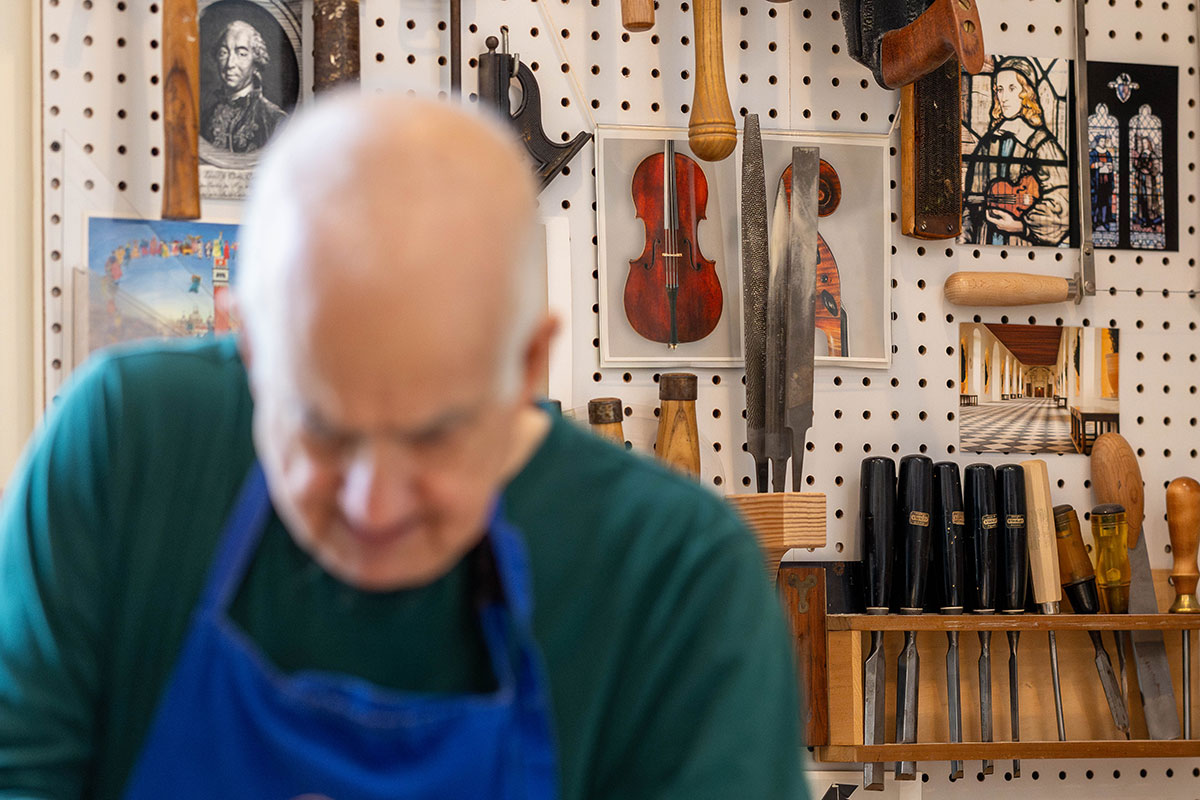
Slicing an icon ‘like a mortadella’
With this in mind, Mairson is assembling an online library of CT scans and digital models of dozens of historical instruments from the 16th, 17th and 18th centuries, creating a valuable resource for researchers and luthiers.
Using focused radiation, a CT scan can capture thousands of virtual cross sections of an instrument, digitally slicing it “like a mortadella,” as Mairson is fond of saying. Unlike medical CT scans, which have fewer slices per inch and use lower amounts of radiation, industrial scans provide a high level of resolution, revealing the instrument’s subtleties in stunning detail.
The resulting 3D model gives precise information on the shape, thickness and even the grain of the original instrument’s wood. On a computer screen, viewers can fly through the body of a historical cello or violin, measure the shape and layout of its structural ribs, view every crack and past repair, and see how the glue that holds it together was spread within its joints.
Mairson convinced Cremona’s Museo del Violino to do an industrial CT scan of its most famous cello, the Stauffer ex Cristiani, built by Stradivari in 1700. He’s also collaborated with other prestigious museums, including the National Music Museum, in Vermillion, South Dakota; the Fondazione Pro Canale, in Milan; the Ashmolean Museum, in Oxford, England; and the Metropolitan Museum of Art, in New York City.
The digital library is not without controversy in the insular lutherie world.
“There are people who think this will facilitate the mass production of high-quality copies, but I don’t believe that,” Mairson says. “The great value of these scans is what they teach you about the mind’s eye of the luthier who crafted the instrument. Even if you make a copy perfectly, you can’t remake the original.”
In the end, though, the magic of these iconic stringed instruments may not be rooted only in the way they’re built. Their desirability may also come from the stories behind them, from the feeling of holding an instrument built by old-world craftsmen and played by renowned virtuosos.
Formal academic studies have put this idea to the test. French psycho-acoustician Claudia Fritz gathered world-class violin players, blindfolded them and asked them to rate violins on the basis of their sound. Half of the violins she used were original “old Italians”; the other half were built by modern luthiers. Almost overwhelmingly, her blindfolded judges preferred the sound of the newer instruments, despite their deep veneration for the old Italians.
This finding doesn’t surprise Mairson in the least. However well-constructed a historical instrument is, its physical materials can shift and bend over 500 years. Wood panels expand and contract with humidity. Patches made to repair cracks or seams alter the vibration of an instrument’s body.
Nevertheless, being aware of an instrument’s provenance will inevitably affect a musician’s opinion of its sound, Mairson believes.
“If you’re a violin virtuoso, and you’ve got this original icon, this talisman, in your hands, I think it absolutely makes you play differently,” he says. “There’s a profound feedback loop between the instrument and your emotional state, and your cognitive state, and your physical state, and it’s all connected back to the instrument’s story.
“Our lives are filled with items that aren’t judged in a purely objective way. That’s not a bug. It’s a feature of what it means to be human.”
